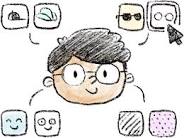The Art of Illustrations
Illustrations have been an integral part of human expression for centuries, transcending language barriers and cultural differences to convey stories, emotions, and ideas. From ancient cave paintings to modern digital art, illustrations continue to captivate and inspire audiences worldwide.
The Power of Visual Storytelling
Illustrations have a unique ability to tell stories in a way that words alone cannot. Through the clever use of colour, composition, and style, illustrators can evoke powerful emotions and create engaging narratives that resonate with viewers on a deep level.
Diverse Forms of Illustrations
Illustrations come in various forms, including traditional hand-drawn sketches, digital artwork, infographics, cartoons, and more. Each style offers its own set of possibilities for artists to explore and experiment with, allowing for endless creativity and innovation.
Applications in Various Industries
Illustrations play a crucial role in a wide range of industries, including publishing, advertising, fashion, education, and entertainment. They are used to enhance storytelling in books, magazines, websites, and social media platforms, as well as to communicate complex ideas in a visually appealing manner.
The Evolution of Illustrations
With advancements in technology and tools such as digital drawing tablets and software programs like Adobe Illustrator, the art of illustration has evolved significantly in recent years. Artists now have access to a vast array of tools and techniques that enable them to create stunning visuals with greater precision and efficiency.
Conclusion
Illustrations are more than just pictures – they are visual narratives that have the power to inspire, educate, entertain, and provoke thought. Whether used for personal expression or professional communication, illustrations continue to be a vital form of artistic expression that enriches our lives in countless ways.
Six Essential Tips for Creating Captivating Illustrations
- Use a variety of colours to make your illustrations visually appealing.
- Pay attention to details to add depth and interest to your artwork.
- Experiment with different styles and techniques to find your unique artistic voice.
- Consider the composition of your illustrations for balance and focus.
- Take inspiration from nature, architecture, or everyday life for fresh ideas.
- Don’t be afraid to seek feedback from others to improve and grow as an illustrator.
Use a variety of colours to make your illustrations visually appealing.
Using a diverse range of colours in your illustrations can significantly enhance their visual appeal. By incorporating a variety of hues, tones, and shades, you can create depth, contrast, and vibrancy within your artwork. Colour choice plays a crucial role in evoking different emotions and moods, allowing you to convey your message more effectively to the viewer. Experimenting with colour combinations can add interest and dynamism to your illustrations, making them more engaging and memorable to the audience.
Pay attention to details to add depth and interest to your artwork.
When creating illustrations, it is essential to pay close attention to details as they can significantly enhance the depth and interest of your artwork. By carefully incorporating intricate elements, textures, and nuances into your illustrations, you can create a more immersive and captivating visual experience for your audience. These details not only add richness to your artwork but also showcase your skill and dedication as an illustrator, making your creations more engaging and memorable.
Experiment with different styles and techniques to find your unique artistic voice.
To truly unlock your creative potential in the realm of illustrations, it is essential to experiment with a diverse range of styles and techniques. By exploring various artistic approaches, from traditional to digital methods, you can uncover your unique artistic voice that sets you apart as a creator. Embrace the journey of discovery and allow yourself the freedom to play with different tools and methods – this process of exploration will not only enhance your skills but also help you establish a distinctive visual identity that resonates with your audience.
Consider the composition of your illustrations for balance and focus.
When creating illustrations, it is essential to consider the composition to achieve balance and focus. The arrangement of elements within the artwork plays a crucial role in guiding the viewer’s eye and conveying the intended message effectively. By carefully arranging visual elements such as shapes, colours, and textures, artists can create a harmonious composition that directs attention to key focal points, enhancing the overall impact and clarity of the illustration.
Take inspiration from nature, architecture, or everyday life for fresh ideas.
Drawing inspiration from nature, architecture, or everyday life can breathe new life into your illustrations, infusing them with fresh ideas and creativity. By observing the intricate patterns, textures, and colours found in the natural world or the captivating structures of architecture, you can unlock a wealth of inspiration that will add depth and authenticity to your artwork. Everyday experiences and interactions also offer a treasure trove of ideas that can be translated into unique and engaging illustrations. Embracing these sources of inspiration can fuel your imagination and help you create illustrations that resonate with viewers on a profound level.
Don’t be afraid to seek feedback from others to improve and grow as an illustrator.
Seeking feedback from others is a valuable practice for illustrators looking to enhance their skills and expand their creative horizons. Constructive criticism and insights from peers, mentors, or clients can offer fresh perspectives, identify areas for improvement, and inspire new ideas. Embracing feedback with an open mind not only helps illustrators refine their techniques but also fosters personal growth and development in the ever-evolving field of illustration.
